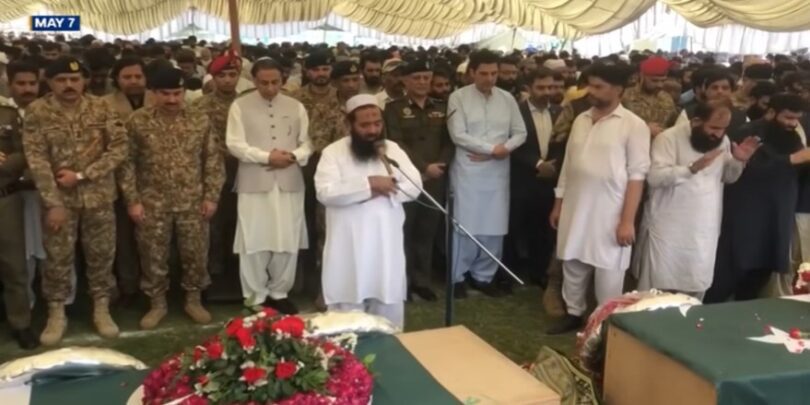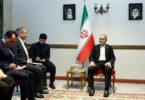Launch of Operation ‘Sindoor’ by India has been covered in these columns earlier (https://www.thestrategicperspective.org/articles/indian-response-to-pahalgam-terror-attack/), where some of the snake (read terrorist) sanctuaries and terrorist launch pads were targeted in Pakistan’s Punjab and Pakistan occupied Kashmir (POK). Pakistan has been exporting donkeys to China over the past few years and there were reports that Beijing was exporting donkey meat to Pakistan packaged as beef. But now Pakistan has received a shock that their Chinese AD radar systems were unable to detect Indian missiles (low flying?) unless they forgot to switch them on. As a consequence of the low performance of Chinese radars, Pakistan is reportedly cancelling a deal to import Chinese tanks signed in April.
#Breaking: #Pakistan reportedly requested tanks from #China in late April. Sources now reveal the deal is being cancelled due to the poor performance of China-made radars during Op Sindoor, exposing major flaws in their air defence systems.@kathmandupost #IndiaPakistanWar pic.twitter.com/HcqfwXYMS6
— 🇳🇵 Nepal News Forum (@NepalNewsForum) May 9, 2025
Wonder if Pakistan has realized the ineffectiveness of the Chinese PL-15 air-to-air missiles against Rafale fighter jets. Interestingly, India has recovered one PL-15 missile intact, which will enable its reverse engineering for obvious benefits.
The recovery of an almost intact Chinese PL-15 air to air missile is an intelligence coup for India. This missile, fired by a Pak fighter (J-10 or JF-17) flew more than 100 kms to land in the Hoshiarpur area. This missile will be opened up and inspected - the findings could end… https://t.co/oKllhUDBCR
— Vishnu Som (@VishnuNDTV) May 9, 2025
Defence Minister Rajnath Singh has said some 100 terrorists were killed in the Indian strikes on May 7, albeit admitting it is difficult to give exact estimates. As was mentioned before, Pakistan vacated the terrorist launch pads fearing Indian retaliation, once tension arose in wake of the Pahalgam massacre. Had we retaliated earlier when all 42 launch pads were full, perhaps we could have killed 3,000-4,000 terrorists.
There is considerable interest over Pakistan army’s rank and file attending the funeral of terrorist leaders/terrorists killed in Indian strikes in Pakistan. This should evoke no surprise at all because the Pakistani army is fully radicalized to the level of terrorists, and both the army and the terrorists train and operate together; the Border Action Teams (BAT) employed against India being a small example in recent years. Same was the case in Pakistan’s invasion of India post partition and conflicts thereafter. Same was the case in Afghanistan before the US invasion in 2001. It is not just non-Muslims and Ahmadiyya Muslims being killed in Pakistan, Balochistan PM-in exile Naela Quadri Baloch calls Pakistan the ‘Slayer of Muslims’; having killed 30 million Bangladeshis, 25,000 Palestinians, and 10,000 of them were killed in one night besides killing four million Afghans.
As expected, Pakistan chose to widen the conflict. On the night of May 7-8, Pakistan attempted to engage multiple military targets from Srinagar in the north down to Bhuj on its land border with India using drones and missiles. These attacks were neutralised by India’s Integrated Counter UAS Grid and Air Defence systems, with the S-400 AD missile system playing a prominent role. India responded in the same vein, also destroying Pakistan’s AD systems at a number of places including Lahore.
PAKISTAN’S BID TO ESCALATE NEGATED - PROPORTIONATE RESPONSE BY INDIA
— PIB India (@PIB_India) May 8, 2025
▪️On the night of 07-08 May 2025, Pakistan attempted to engage a number of military targets in Northern and Western India including Awantipura, Srinagar, Jammu, Pathankot, Amritsar, Kapurthala, Jalandhar,…
India has reportedly shot down three Pakistani fighter jets and an AWACS aircraft (https://www.indiatoday.in/india/video/india-shoots-down-pakistan-air-forces-awac-3-fighter-jets-2721868-2025-05-09). As part of wartime humour, Pakistan’s defence minister says, “We didn’t intercept Indian drones to avoid exposing our locations.”
🚨 Joke of the DAY.
— Megh Updates 🚨™ (@MeghUpdates) May 9, 2025
Pakistan Defence Minister says — "We didn’t intercept Indian drones to avoid exposing our locations." 😂 pic.twitter.com/3u4dlpqkxB
On the night of May-8-9, Pakistan attempted to again target multiple areas including many civilian and military areas, and airfields, but all their drones and missiles were shot down. India has also targeted multiple areas including Lahore, Rawalpindi and Karachi – ports of Karachi and Omara were pounded with missiles fired from INS ‘Vikrant’ (https://www.dnaindia.com/india/report-indian-navy-strikes-pakistan-with-ins-vikrant-amid-india-pakistan-war-3150536). Heavy exchange of fire is continuing across the Line of Control (LoC), with Pakistan using heavy artillery and mortars on villages. There are casualties on both sides.
The Baloch Liberation Army (BLA) is simultaneously attacking the Pakistani military (killed 16 Pakistani soldiers in the latest attack), as well as replacing Pakistani flags with their own in many places. Concurrently, the TTP has killed 20 Pakistani military personnel at Shakal in South Waziristan and seized their weapons
South Waziristan: Major TTP Attack in Shakai, 20 Soldiers Killed, Weapons Seized — War Observer Report
— War Observer (@war_observer1) May 9, 2025
In a major assault late last night, militants from the banned Tehrik-i-Taliban Pakistan (TTP) carried out a coordinated attack on the Pakistani military’s Dangate outpost in… pic.twitter.com/ji6k5lB7TC
Naela Baloch describes how Pakistan double-crossed Independent Balochistan and “occupied” it.
Veteran Brigadier V Mahalingam describes how Pakistan assassinated Nawab Akbar Khan Bugti in 2006 to keep illegally occupying Balochistan.
Pakistan’s treachery.
— Brig V Mahalingam (@BrigMahalingam) May 8, 2025
Was Balochistan part of the package that created Pakistan as an independent country following India-Pakistan partition?
Definite NO. This story is being spun by Pakistan without giving out the truth about Balochistan being forced to become a part of…
A post on X calls to connect Bharat with Balochistan, understanding each other’s cultural bonds, historic and brotherly relations
Dear international friends of Balochistan.
— Mir Yar Baloch (@miryar_baloch) May 8, 2025
We are starting a campaign to connect the people of Bharat and Balochistan, understanding each other's cultural bonds, historic and brotherly relations.
We will start publishing your write ups, articles, personal thoughts, your… pic.twitter.com/8Hem2P2agA
as also mentioning the Hinglaj Mata Mandir situated in Balochistan.
Once upon a time, there was a Pakistan.
— Mir Yar Baloch (@miryar_baloch) May 7, 2025
Welcome to #Balochistan heaven on earth.
Welcome to #HinglajMataMandir situated in Democratic Republic of Balochistan.#Sialkot #OperationSindoor#IndiaPakistanWar#PakistanMassSurrender pic.twitter.com/GLgY2tiWtM
Naela Baloch has been seeking India’s help to free Balochistan. After the Pakistan-engineered massacre in Pahalgam, India should pull out all stops to do so. It is also high time Balochistan is officially referred as Pakistan occupied Balochistan (PoB) in maps, media and correspondence in India. Time is also opportune for the units of Pakistan army’s Baloch Regiment to mutiny, desert with weapons, and join the independence movement of Balochistan. Naela Baloch, activists like Mir Yar Baloch, and BLA itself should call for this, especially since these army units are deliberately always dominated by Punjabi officers to keep Baloch aspirations suppressed.
Pakistan has approached its partners for more loans and would naturally be begging the World Bank, IMF and China for more. Significantly, Army Chief Asim Munir has been arrested, moved to unknown location and replaced by CJCSC Sahir Shamshad Mirza according to unconfirmed reports.
https://t.co/s7AMCpI56p
— Brig V Mahalingam (@BrigMahalingam) May 9, 2025
In an unusual turn of events, within Pakistan’s military establishment, Chairman of the Joint Chiefs of Staff Committee (CJCSC), General Sahir Shamshad Mirza, has reportedly arrested Army Chief General Asim Munir. The move, if confirmed, signals…
If true, this may awaken Pakistan to acknowledge India’s escalation dominance. Asim Munir’s motivation is rooted in preserving military dominance through religious nationalism (not geopolitics), making him unpredictable and potentially reckless, according to Ayesha Siddiqa, Pakistani political scientist and author. She describes Munir lacking strategic flexibility like his predecessors.
So, what happens beyond? Pakistan’s economy cannot sustain an all-out war with India, although it may still get loans from the IMF, China, OIC and other unspecified sources. Islamabad also understands that India’s S-400-led Integrated Counter UAS Grid and Air Defence systems are difficult to penetrate. But it may resort to swarm drone attacks, hoping some would get through, with the support from China and Turkey; copying what Ukraine is doing against Russia. Turkey is mass producing advanced drone and China is indigenously procuring one million drones by 2026. The Islamic State had shown interest in drone-based chemical and biological weapons attacks way back in 2019 (https://warontherocks.com/2019/02/drones-of-mass-destruction-drone-swarms-and-the-future-of-nuclear-chemical-and-biological-weapons/). Drone swarm technology is likely to encourage chemical and biological weapons proliferation and improve the capabilities of states that already possess these weapons. We should not discount such possibility, especially since drones destroyed in own territory would still offload the chemical or biological weapon.
Pakistan claims India attacked the power house of their dam, which is being seen as an excuse to attack India’s hydel projects. Similarly, it would not be out of place for Pakistan to attack one of the China-built CPEC projects and blame it on India, in order to draw China into the conflict. We must acknowledge that peace between Pakistan and India would result in the Pakistani army losing its stranglehold on Pakistan, which is not, and will never be acceptable to its Generals, be it Asim Munir or another. Therefore, the call of Kashmir as Pakistan’s ‘jugular vein”, liberating J&K and calls for jihad against India; no matter if the current conflict de-escalates and Pakistan calls for dialogue. But terrorism will remain the other face of Pakistan and terrorism and talks can hardly go together. Hoping that the hydra would change its stripes is like expecting Donald Trump to convert to Islam.
Pakistan would have alerted its sleeper cells in India. We, therefore, should be prepared for sabotage and terror attacks (even drone attacks) in India’s hinterland, to include critical and other infrastructure, supply chains, poisoning water systems, attacking chemical and fertilizer plants, and the like. Terrorists have developed new types of explosives experimenting with commercially available products like fertilizer and chemicals, coupling them with radioactive like material to increase destructive power. Recovery of a Uranium mine (Chinese?) in northeast India in 2014 and theft of fissile material in other parts of the world are examples of inherent dangers of CBRN terrorism. Pakistan is desperate and it would go for the next best bet, not nuclear weapons. Defence Minister Rajnath Singh has said, we have enough ammunition, which hopefully also includes crucial systems like the S-400. China would be keenly watching our ammunition expenditure, reserves and supply chains.
Finally, the BLA and TTP are doing their best against the Pakistani establishment. The solution to the Pakistani problem is the independence of Balochistan, Sindh and Pashtunistan. Hopefully, the US understands the strategic significance of independent Balochistan.
The author is an Indian Army veteran. Views expressed are personal.











